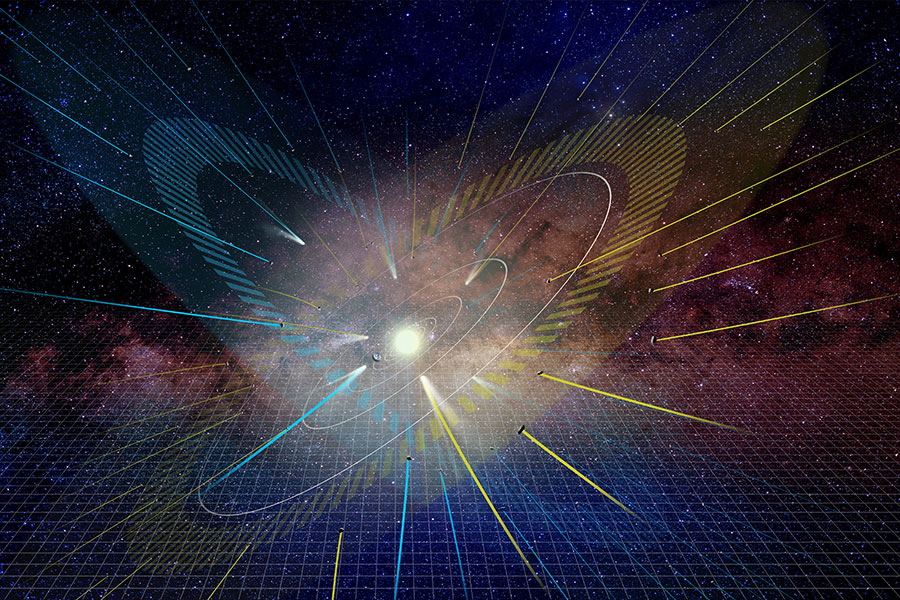Almost all the objects orbiting the sun live in a particular plane, called the ecliptic plane. But a recent analysis of long-period comets reveals a second home, a so-called “empty ecliptic”. And it may be populated with comets dragged there by none other than the gravity of the Milky Way galaxy.
When solar systems like ours first start forming, they compress from a loose-and-irregular cloud of gas and dust into a rapidly spinning, thin, flat disk. All the planets, the asteroids, and the comets form in this disk. Once that disk disappears (either through its material accreting onto planets or it getting blasted by outbursts from the young sun), all the objects still maintain that original orbital preference, something called the ecliptic plane.
You can see this effect today, as you watch the sun, the moon, and all the planets travel along roughly the same track on the sky.
The comets are another story. While they initially formed along with everyone else on the ecliptic plane, their gravitational interactions with the outer planets forced them into other, essentially random orbits around the sun. That’s why comets enter our skies from all sorts of directions.
But the distribution of comets in our solar system may not be too random, according to new research appearing the Astronomical Journal. That analysis found that long-period comets tend to also prefer a second plane of the solar system.
This plane, known as the “empty ecliptic” because it started out barren and was later filled with comets, sits at a very precise angle relative to the original ecliptic plane. The ecliptic itself sits at 60 degrees relative to the plane of our Milky Way galaxy (in other words, our solar system is tilted by 60 degrees relative to the galaxy), while the empty ecliptic sits at 60 degrees in the opposite direction.
This lead the researchers to conclude that the environment of our solar system – namely, the gravitational differences surrounding us – play a role in shifting and shaping the orbits of long-period comets.
These results aren’t nearly cut-and-dry, however. Comets do have all sorts of orbits, with just a general vague preference to either hang out in the either the normal or empty ecliptic, but even then the most-preferred location isn’t exactly on either one. Understanding why this is the case can help astronomers understand how the galaxy itself shaped the evolution of our solar system.

